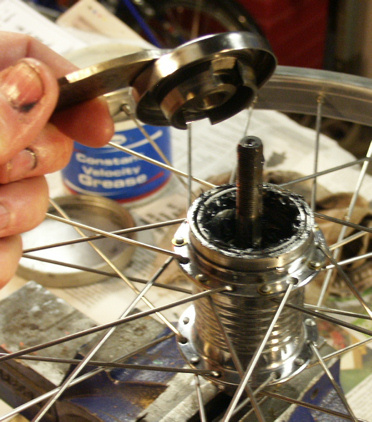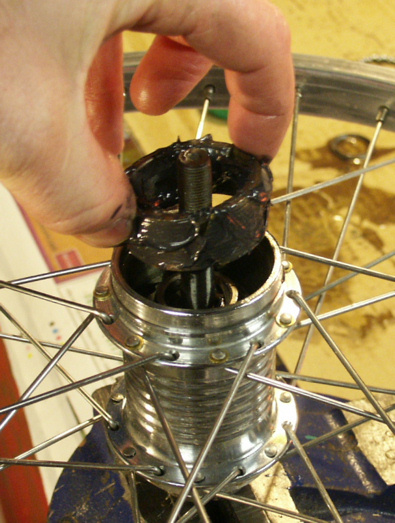Fichtel & Sachs Duomatic Dismantling
The F & S Torpedo Duomatic was a two speed hub that changed gear with a quarter backward turn of the pedals. If the pedals were rotated further back, a powerful hub brake was engaged. It was a legendary and very successful design that even today is highly prized. There is something quite magical about how the gears change, using no cables at all. Even with the gear internals laid out on the bench it is not easy to understand how it works.
Note that there are two versions of the Duomatic; each has different size axles and parts. They also change the gears in different ways and I suspect that few of the components are interchangeable. First, we will have a look at the older Duomatic that was fitted to 1960’s bicycles. The touring cyclist Colin Martin famously rode a Moulton Mk3 from Wiltshire to Australia on a Duomatic probably like the one that will be rebuilt here. For illustration, the photo sequence shows the hub parts in order on the bench, but of course you do not have to keep removing the hub from the vice each time you remove a part. Click on any photo to get a larger version in this window. If you are viewing on a mobile phone, the photos may be off to the right, so swipe a finger to see them. Alternatively turn the screen to display in landscape.
Colin Martin took a spare Duomatic in his luggage on his trip around the world, but as things were working so well he decided to abandon it by burying it!























